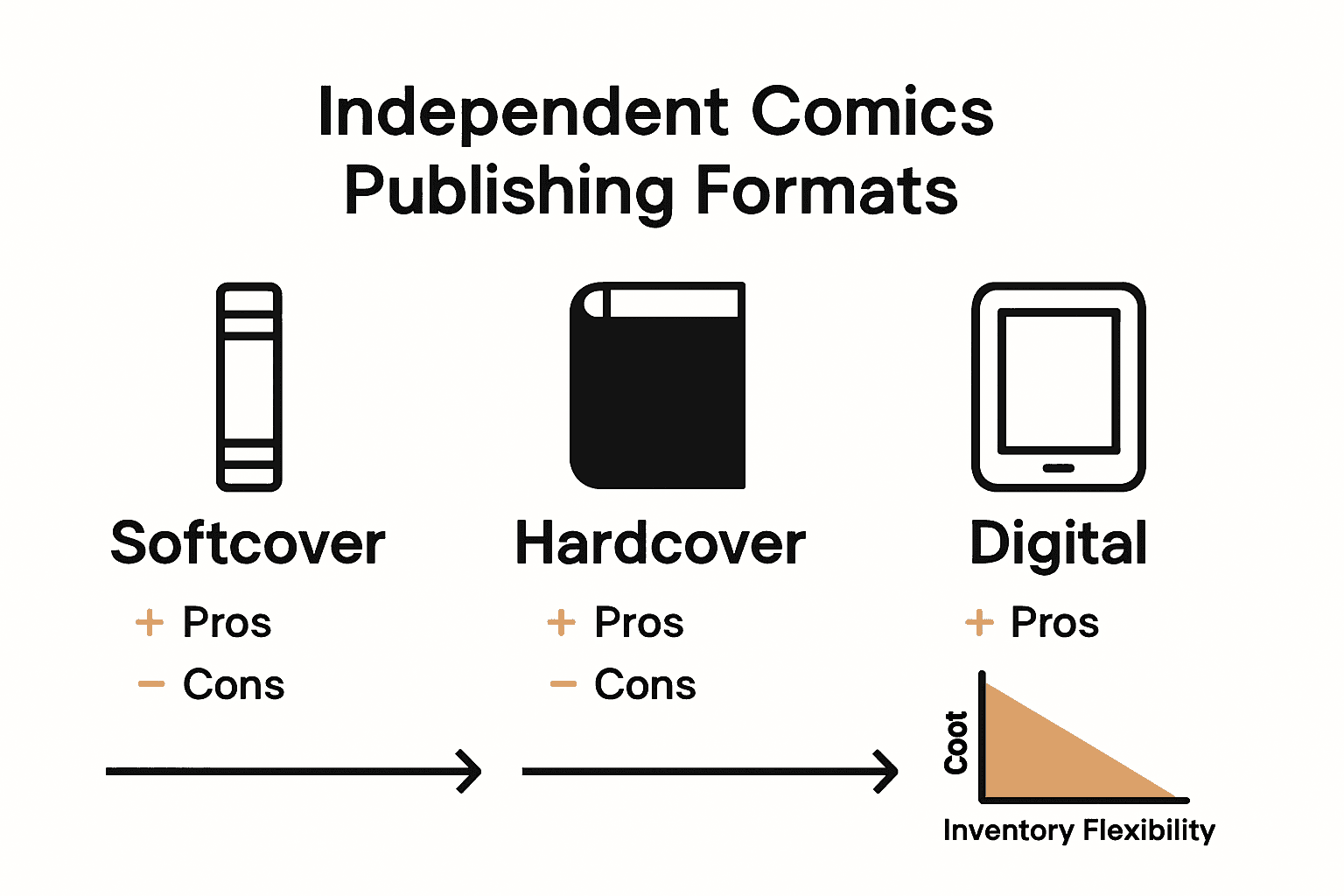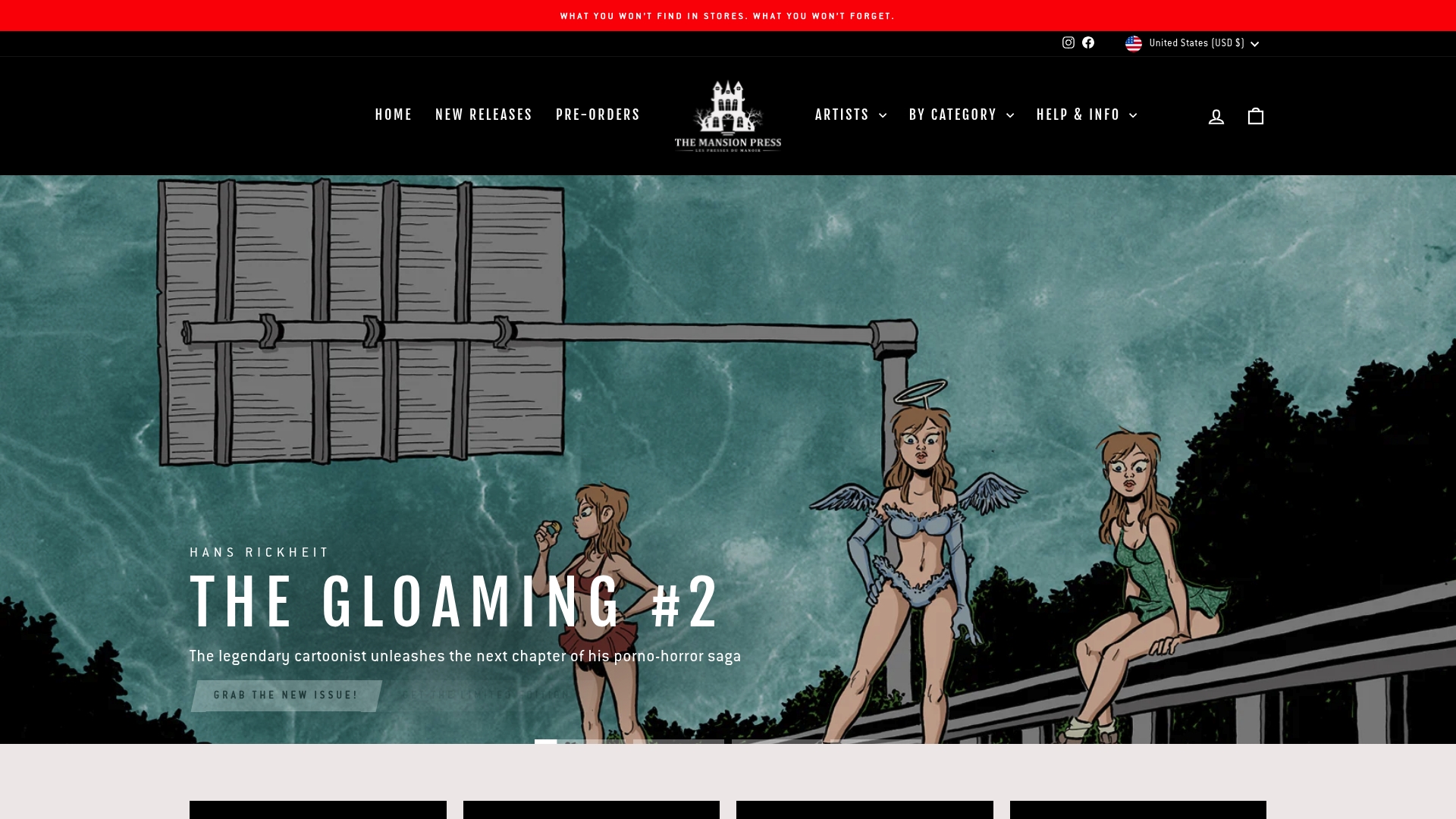DIY Publishing in Comics: Step-by-Step Guide for Creators
Launching your first comic is exciting, but nearly 80 percent of independent creators hit roadblocks before reaching publication. Knowing your audience and nailing down the basics from the start can make the difference between a project that fizzles and one that flourishes. With clear steps for defining your vision, handling artwork, choosing publishing formats, and creating a sales plan, you can move from idea to successful printed comic with confidence.
Table of Contents
- Step 1: Define Your Comic Project And Audience
- Step 2: Prepare Artwork And Digital Files For Print
- Step 3: Choose Publishing Formats And Printing Options
- Step 4: Set Up Sales Channels And Marketing Plans
- Step 5: Verify Quality And Fulfill Orders
Quick Summary
| Key Point | Explanation |
|---|---|
| 1. Define your target audience clearly | Understanding who your comic is for shapes the story and art, making it more engaging. |
| 2. Prepare high-resolution artwork for print | Use at least 300 DPI and correct color modes for professional quality in your final product. |
| 3. Choose appropriate publishing formats | Selecting the right format affects distribution and audience reach; consider both print and digital options. |
| 4. Develop a solid marketing plan | Engage with potential readers through social media and local events to build a following and increase sales. |
| 5. Implement strict quality controls | Conduct thorough checks of printed versions and maintain clear order fulfillment processes for customer satisfaction. |
Step 1: Define your comic project and audience
Defining your comic project and target audience is the critical first step in transforming your creative vision into a tangible storytelling experience. According to nchh.org, identifying key messages and understanding your potential readers helps establish a strong foundation for your comic.
Start by asking yourself fundamental questions about your comic’s core concept. What genre are you exploring? Is it science fiction, fantasy, slice of life, or a unique blend? Determine the central themes and narrative style that will distinguish your work. Consider the emotional journey you want readers to experience and the visual aesthetic that will complement your storytelling. Think about the age range and interests of potential readers who would connect most deeply with your comic’s narrative and artistic approach.
Research existing comics in your genre to understand market trends and audience expectations. This doesn’t mean copying others but rather understanding what resonates with readers. Create a clear character profile and narrative arc that feels authentic and compelling. Your goal is to craft a comic that speaks directly to your intended audience while maintaining your unique creative voice.
For additional insights into creating innovative comics, check out our guide on experimental storytelling in comics. In the next step, we will explore how to develop your comic’s narrative structure and character development.
Step 2: Prepare artwork and digital files for print
Transforming your comic artwork into professional print ready files requires meticulous preparation and technical understanding. According to Domestika, preparing artwork for publication involves careful consideration of resolution, color modes, and file formats that will ensure your comic looks stunning in print.
Begin by scanning or digitalizing your artwork at a high resolution minimum of 300 DPI (dots per inch) to capture intricate details and maintain image quality. Select a color mode appropriate for print typically CMYK for professional printing which ensures accurate color reproduction. Convert your files to PDF or TIFF formats which are standard in professional publishing. Pay special attention to margins and bleed areas ensure your artwork extends slightly beyond the page edges to prevent unwanted white borders during trimming.
As recommended by PMC Research, develop a systematic approach to organizing your digital files. Create a consistent naming convention for each page or panel and maintain a backup of original high resolution files. Check your digital files for potential issues like pixelation, color inconsistencies or formatting errors before submission to your printer.

For comprehensive guidance on publishing visual collections, explore our DIY Artbook Publishing guide. Your next step will involve selecting the right printing service that can bring your comic to life with professional quality.
Step 3: Choose publishing formats and printing options
Selecting the right publishing format and printing options can make or break your comic project. According to Cartoon Studies, understanding the nuanced landscape of graphic novel publishing is crucial for successfully bringing your creative vision to life.
Explore various publishing formats that align with your artistic goals and target audience. Traditional print options include softcover and hardcover books with different paper weights and finishes. Consider print on demand services which allow lower initial investment and flexible inventory management. Digital publishing offers additional opportunities like PDF downloads or online comic platforms that can expand your potential readership. Evaluate factors such as page size standard comic book dimensions versus graphic novel sizes color versus black and white printing and paper quality that will best showcase your artwork.
As recommended by CBLDF, research printing costs and minimum print runs carefully. Some printers offer more flexible options for independent creators. For deeper insights into graphic novel formats, check out our guide on understanding graphic novel formats. Your next step involves preparing a comprehensive budget and distribution strategy for your comic publication.

Step 4: Set up sales channels and marketing plans
Creating effective sales channels and marketing strategies transforms your comic from a passion project into a potential career. According to Job Bank Arts, understanding the comic industry landscape is essential for successfully monetizing your creative work.
Develop a multi channel approach to selling your comic. Online platforms like social media marketplaces comic specific websites and your personal website offer direct sales opportunities. According to Domestika, building a strong portfolio and strategic marketing are critical for independent comic creators. Leverage Instagram Twitter and art focused platforms to showcase preview panels behind the scenes content and engage potential readers. Consider partnering with local comic shops indie bookstores and online retailers who specialize in graphic novels and independent comics.
Create a targeted marketing plan that highlights your unique storytelling style and artistic approach. Develop a consistent brand identity across all platforms that reflects your comic aesthetic. Attend comic conventions comic book festivals and local art events to network and directly connect with potential readers and industry professionals. Offer limited edition prints advance signed copies or exclusive digital content to incentivize early supporters. For more detailed strategies on promoting your work, explore our guide on submitting graphic novels to art retailers. Your next step involves establishing a sustainable distribution and engagement strategy that will help your comic reach its intended audience.
Step 5: Verify quality and fulfill orders
Ensuring the highest quality of your comic and establishing a smooth order fulfillment process are critical steps in building a professional reputation. According to PMC Research, maintaining clear communication and rigorous quality standards is fundamental to successful publication.
Conduct a comprehensive quality check of your printed comics before shipping. Carefully inspect each copy for printing inconsistencies color accuracy paper quality and overall presentation. According to Domestika, successful comic creators develop a systematic approach to quality control. Create a checklist that includes examining color saturation page alignment binding integrity and overall print resolution. For digital orders verify file integrity and ensure high quality PDF or digital formats are correctly uploaded and accessible to customers.
Establish an efficient order fulfillment system that prioritizes customer experience. Set clear expectations for shipping timelines packaging standards and handling procedures. Create a simple return and replacement policy that demonstrates your commitment to customer satisfaction. Package your comics with care using protective materials that prevent damage during shipping. Consider offering tracking information and personalized thank you notes to enhance customer engagement. For more insights into managing comic book sales, explore our guide on submitting graphic novels to art retailers. Your final step involves maintaining ongoing communication with your audience and continuously improving your publishing process.
Bring Your Comic Vision to Life with The Mansion Press
Struggling to navigate the complex world of DIY comic publishing? From defining your target audience and preparing print-ready artwork to choosing formats and managing sales channels, the challenges can feel overwhelming. Your goal is clear: create a comic that truly connects with readers while maintaining professional quality and effective marketing. You want a seamless experience that turns your passion into a vibrant success.

At The Mansion Press, we specialize in supporting independent comics and art creators just like you. Our curated selection of artbooks, comics, and limited-edition collector’s items provides a platform designed to showcase your unique storytelling style to a global community of collectors and readers. Ready to accelerate your publishing journey? Explore how to present your work with professional polish, connect with passionate audiences, and unlock new sales opportunities today. Discover more at The Mansion Press and start turning your creative vision into reality now.
Frequently Asked Questions
How do I define my comic project and target audience?
Start by identifying the genre and themes of your comic to establish its core concept. Research similar comics to understand your potential readers’ preferences and create character profiles to refine your storytelling approach.
What preparation is needed for the artwork and digital files for print?
Prepare your comic artwork by ensuring it is scanned at a minimum resolution of 300 DPI and saved in a suitable color mode, typically CMYK. Organize your digital files with a consistent naming convention and back up your work to avoid data loss.
What publishing formats should I consider for my comic?
Evaluate various publishing formats such as softcover, hardcover, or digital options based on your target audience and artistic goals. Determine the page size and printing specifications that will best complement your comic’s visual style and content.
How can I create effective sales channels for my comic?
Develop a multi-channel approach by utilizing online platforms and personal websites to sell your comic directly. Engage with readers on social media by sharing previews and attending events to promote your work.
What steps can I take to verify the quality of my printed comic?
Conduct a thorough quality check of each printed copy, focusing on color accuracy and overall presentation. Use a checklist to ensure each comic meets your quality standards before shipping them to customers.
How do I establish an efficient order fulfillment process?
Set clear expectations for shipping times and packaging standards to enhance customer satisfaction. Create a smooth order fulfillment workflow that includes tracking information and a simple return policy to build trust with your audience.
Recommended
- Creating Avant Garde Comics: A Complete Step-by-Step Guide – The Mansion Press
- Understanding Comics Zines Culture: The Art of Self-Publishing – The Mansion Press
- DIY Artbook Publishing: Create Stunning Visual Collections – The Mansion Press
- 7 Essential Tips for Emerging Artists in Alternative Comics – The Mansion Press
- How To Guides -


